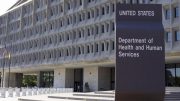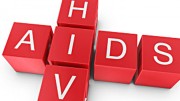By: Eric Brus*
New York State’s Ending the Epidemic Task Force (Task Force) has developed a 70-page blueprint with recommendations to help the state meet its 2020 benchmarks toward ending the state’s AIDS epidemic. Last June, New York Governor Andrew M. Cuomo announced a three-point ending-the-epidemic plan whose main goals include: 1) reducing the number of new HIV infections in New York state by 75%―from about 3,000 per year to just 750 by 2020―and thereby achieving the state’s first-ever decrease in HIV prevalence since the epidemic began; and 2) reducing by 50% the rate at which persons diagnosed with HIV progress to AIDS.
In October, the New York Department of Health appointed a Task Force of more than 60 HIV researchers, clinicians, policy-makers, and advocates to provide guidance on reaching these goals. The Task Force met regularly over a three-month period to develop comprehensive recommendations for New York state, county, and city government agencies, as well as health providers, the private sector, and community-based organizations. [pullquote]Last June, New York Governor Andrew M. Cuomo announced a three-point ending-the-epidemic plan …The resulting blueprint document includes 30 recommendations designed to reach the goal of reducing new HIV infections 75% by 2020.[/pullquote]
The resulting blueprint document includes 30 recommendations designed to reach the goal of reducing new HIV infections 75% by 2020. Looking further ahead, the Task Force also included seven “getting-to-zero recommendations,” whose ultimate goals are zero new infections, zero AIDS-related deaths, and zero HIV discrimination in the state. These getting-to-zero recommendations address key social, legislative, and structural barriers that hamper HIV prevention and care efforts. They include:
- overturning statutes that make it less likely persons at risk for HIV will carry supplies such as condoms and sterile syringes;
- implementing mandated, school-based comprehensive sexual health education;
- establishing a single point of access to housing and other essential benefits and social services for all low-income persons with HIV;
- providing comprehensive protections for all New Yorkers regardless of their gender identity or expression;
- enacting reforms to improve drug user health;
- expanding Medicaid coverage to targeted populations; and
- guaranteeing minors the right to consent to HIV and STI treatment, diagnosis, prevention, and prophylaxis, including sexual health-related immunization.
In the Introduction to the Blueprint, its authors claim, “New York State’s plan is far more ambitious than the national strategy. New York’s successful implementation of the Governor’s plan and the Blueprint of the Governor’s Ending the Epidemic Task Force, can ultimately serve as a national model for ending HIV as an epidemic.”
ONAP Forums Gather Community Input on Updating National HIV/AIDS Strategy
In April and early May, the White House Office of National AIDS Policy (ONAP) hosted four listening sessions in Los Angeles, Nashville, Detroit, and Boston to gather community input to inform its update of the National HIV/AIDS Strategy (NHAS) for the 5-year period from 2016 through 2020. At the sessions, ONAP Director Douglas Brooks discussed the ongoing process to review and update the NHAS, and listened to community input on ways to reach four key NHAS goals, namely:
- reducing new HIV infections (Los Angeles session);
- increasing access to HIV care (Nashville session);
- reducing HIV-related health disparities (Detroit session); and
- achieving a more coordinated national response to the domestic epidemic (Boston session).
If you are interested in a capsule summary of the main community recommendations and comments at each session, please read this May 13 post on the Blog.AIDS.gov website by Dr. Ronald Valdiserri, Director of the Office of HIV/AIDS and Infectious Disease Policy.
New ACA Guidance on Preventive Services Coverage for Transgender Persons
Three U.S. federal agencies have issued new guidance clarifying consumers’ rights to coverage for preventive services under the Affordable Care Act (ACA), including the rights of transgender persons who have historically experienced unequal access to health care services. According to a recent post on Blog.AIDS.gov, “The new federal guidance states that non-grandfathered health plans and insurers cannot limit coverage of preventive services to those that are specific to the person’s sex assigned at birth, gender identity, or recorded gender. Insurers should cover the preventive services that an individual’s provider, not an insurance company, determines are medically appropriate. This means, for example, that a transgender man with an intact cervix can get coverage without cost sharing for a pap smear, if recommended by his provider. This guidance helps ensure that transgender individuals get the preventive services they need.” For the specific guidance on preventive coverage for transgender persons, see the response to Question 5― “Can plans or issuers limit sex-specific recommended preventive services based on an individual’s sex assigned at birth, gender identity, or recorded gender?” ―in an ACA Implementation Frequently Asked Questions document dated May 11.
Updated LGBT Health Guide from ACP and The Fenway Institute
The American College of Physicians (ACP) in collaboration with The Fenway Institute recently published the second edition of The Fenway Guide to Lesbian, Gay, Bisexual, and Transgender Health. The guide, which is available in both print and epub formats, has been updated extensively to reflect clinical and social changes since the publication of the first edition 8 years ago. It includes current information on a variety of topics, including:
- sexual health and HIV prevention;
- principles for taking an LGBT-inclusive health history;
- caring for LGBTQ youth, families, and older adults;
- behavioral health care: coming out, intimate partner violence, drug, alcohol, and tobacco use;
- understanding the healthcare needs of transgender people;
- development of gender identity in children and adolescents; and
- policy and legal issues.
New Resources: HIV and Aging Toolkit
HIV and Aging Toolkit: This toolkit from the AIDS Education and Training Centers (AETC) National Resource Center is a resource guide on HIV and aging for AETC members and healthcare professionals. Information is provided on HIV prevention, assessment, treatment, psychosocial aspects, and the cascade of care in older persons living with HIV. The toolkit includes: an annotated bibliography; educational videos; an infographic summarizing key facts about HIV transmission, prevention, and treatment in older persons; pharmacy recommendations regarding prescription and over-the-counter drugs and supplements, as well as adherence to HIV drugs; and additional resources on HIV and aging.
National HIV Testing Day (June 27)
National HIV Testing Day is an annual observance to promote HIV testing in the U.S. This year, HIV Testing Day will be held on Saturday, June 27. The theme for the 2015 campaign is “Take the Test, Take Control.” To help you, your patients or clients, and at-risk communities prepare for and mark the day, we’ve compiled an annotated list of online resources focusing on HIV testing.
HIV Testing. Fact sheet from AIDSinfo with information about testing in a question-and-answer format. Also available in Spanish.
HIV Testing in the United States. Web page from the Kaiser Family Foundation.
HIV Testing. Fact sheet from AIDS InfoNet. Also available in Spanish.
HIV Screening and Testing. Web page from the CDC with links to many resources, including guidelines for HIV testing in clinical and nonclinical settings, HIV laboratory testing and reporting of test results, and HIV testing of donors of blood, organs, and other tissues.
HIV Expanded Testing Initiative. Fact sheet from CDC.
State HIV Testing Laws. Web page from the Clinician’s Consultation Center that includes a compendium summarizing legal guidelines for HIV testing in U.S. states, the District of Columbia, and Puerto Rico.
National HIV and STD Testing. CDC web page that includes a search feature to help people find testing sites nearby.
*Eric Brus is the Director of Health Information at AIDS Action Committee. This report is produced by the Health Library of the AIDS Action Committee in collaboration with the New England AIDS Education and Training Center Minority AIDS Initiative Project. The full version is available online.
[From a News Release]








